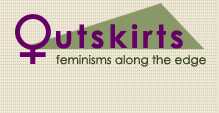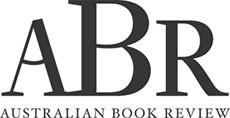Writing
Josephine is currently working on a new novel begun as Emerging Writer-in-Residence at KSP Writers’ Centre, titled the dream detective.
She also continues to write personal essays begun under the mentorship of Heather Taylor-Johnson as part of the first iteration of the Four Centres Emerging Writers Program, supported by Culture and the Arts (WA) through Fremantle Press. The essays draw on her award-winning PhD thesis, Vulvodynia and Autoethnography, in telling the story of her life with vulvodynia, charting the changing nature of her relationship with her body and chronic pain. It uses the disorder as a prism through which to explore norms and assumptions in society and medicine, drawing on models as diverse as feminism, trauma theory, historical hysteria, modern neurophysiology and Freudian psychoanalysis.
Essays already published are listed below, along with other publications in fiction, poetry, review and blog-form.
(The PhD thesis is commercial-in-confidence; the abstract is available to university students and academics through the Edith Cowan University library.)
2024 ‘When Descriptor is Diagnosis: An Autoethnographic Response to the Medical Treatment of Women with Vulvodynia‘, co-authored with Alexandra Ridgway, in Australian Feminist Studies.

Abstract: Women with chronic vulvar pain experience symptoms that can affect their everyday functioning. These women are often diagnosed with vulvodynia, defined as vulvar pain without a medical explanation lasting at least three months. Yet while vulvodynia is presented by medical authorities as a diagnosis it is, more accurately, a descriptor of the physical condition. As such it does not have the ability to explain what causes this vulvar pain and, consequently, cannot determine an appropriate treatment pathway for all patients. As women with vulvodynia (‘V women’), we use this article to highlight the issues posed by a descriptor camouflaging as a diagnosis, including the harm it can cause. Using literature in the field and autoethnographic vignettes, our article unravels the effects of receiving this diagnosis from disappointment at what it offers women like us in explanatory terms to how it pressures us to live up to ideas of the ideal heteronormative patient (and woman). While we use our experiences to speak to how medical descriptors can be used, through diagnosis, to undermine and damage women’s bodies and voices, we also reveal possible paths for resistance through personal research, autoethnography and encouragement of the voices and agency of other ‘V women’.
2021 ‘Weaponry’ in Danielle O’Leary & Rachel Robertson (eds.), Curious Threads, Meniscus 9.2.

An ekphrastic response to three artworks in IOTA21, this pantoum also contains phrases drawn from my father’s journal, which was a gift from me in 1984. I discovered his writing after his death in 2018 and used the journal to write this poem.
2021 ‘See What You Made Zeus Do (Part 1)’ in Cassandra Atherton (ed.). Pulped Fiction. Strawberry Hills: Spineless Wonders. 33.

This piece of microfiction twists Greek mythology in an feminist take on the patriarchal power structures that have underpinned society, and which laid the groundwork for endemic gendered abuse.
2019 ‘Affectionate Love: An Autoethnographic Investigation into a Dark Inheritance’, TEXT 57: Peripheral Visions
 This paper investigates an enigmatic past through research and writing devoted to nineteenth-century London surgeon Isaac Baker Brown and his family, with reference to the medical condition vulvodynia. The article seeks to address the identity of the dedicatee to whom Isaac made out, in 1866, with ‘affectionate love’, a copy of his book, On the curability of certain forms of insanity, epilepsy, catalepsy, and hysteria in females. A fictionalised version of Baker Brown informs the investigation. (Confronting content warning.)
This paper investigates an enigmatic past through research and writing devoted to nineteenth-century London surgeon Isaac Baker Brown and his family, with reference to the medical condition vulvodynia. The article seeks to address the identity of the dedicatee to whom Isaac made out, in 1866, with ‘affectionate love’, a copy of his book, On the curability of certain forms of insanity, epilepsy, catalepsy, and hysteria in females. A fictionalised version of Baker Brown informs the investigation. (Confronting content warning.)
At first it is his black back inclined over a narrow bed. Then the woman’s trussed body, and her eyes flicking left, right.
‘I would like to have my hands untied,’ she whimpers. ‘I will be very quiet.’
His hand clamps her shoulder. His mouth opens to tell her why.
The Surgical Home. The beds, separated one from the other. The women with scared eyes and stricken bodies.
There is no affection here, I think. There is no love.
2018 ‘So Your Piece Has Been Rejected’, on Editor’s Desk, Westerly.
![]() A reflection on being ‘rejected’ from the perspective of writer, teacher, and as Associate Editor at Westerly.
A reflection on being ‘rejected’ from the perspective of writer, teacher, and as Associate Editor at Westerly.
2017 ‘Mark My Words’, Southerly 76.2: Writing Disability
 This essay explores the creative response to chronic illness and suffering through the many iterations of the word mark, examining how being marked speaks to wounding, and making marks speaks to creativity, two profoundly different but potentially associated states of being. Can the mark of vulvodynia be transformed through making the marks of writing? Do the author’s own essays and fictional narratives create an alternative transformative mark?
This essay explores the creative response to chronic illness and suffering through the many iterations of the word mark, examining how being marked speaks to wounding, and making marks speaks to creativity, two profoundly different but potentially associated states of being. Can the mark of vulvodynia be transformed through making the marks of writing? Do the author’s own essays and fictional narratives create an alternative transformative mark?
2015 ‘Sigh-Co’, Westerly 60.2. 50–53.

In this piece of short fiction a young boy’s behaviour disturbs his family and, hopefully, the reader. The capacity to label is made opaque.
2015– Reviews for Australian Book Review.
See, for instance, a review of Murmurations, by Carol Lefevre. (2020).
2015 ‘A Conversation with the Enemy’, Outskirts 32.
 In this article, the focus is on the author’s research and writing practice as it evolved during and after the writing of her PhD thesis, Vulvodynia and Autoethnography. The methodology consists of a conversation with an ‘enemy’ (vulvodynia) conducted most notably within the body, and through dreams and meaningful coincidence – what C.G. Jung calls synchronicity.
In this article, the focus is on the author’s research and writing practice as it evolved during and after the writing of her PhD thesis, Vulvodynia and Autoethnography. The methodology consists of a conversation with an ‘enemy’ (vulvodynia) conducted most notably within the body, and through dreams and meaningful coincidence – what C.G. Jung calls synchronicity.
2014 ‘That Hand’ in Amanda Gardiner, Rashida Murphy & Josephine Taylor (eds.), Other Voices: A Collection of Short Stories. Joondalup: Peter Cowan Writers’ Centre Inc. 22–31.
 The characters in this short story went on to populate Josephine’s novel Eye of a Rook.
The characters in this short story went on to populate Josephine’s novel Eye of a Rook.
Other Voices is available through PCWC. It can also be purchased as an ebook.
2013 ‘Vulvodynia and the Ambiguous Between’, Axon: Creative Explorations 3.1.

This personal essay explores pain and the ‘ambiguous between’, using vulvodynia as a specific example of an unbearable state of body/mind tension and pressure in a space of obscurity and doubt. Anecdote, theory and speculation intertwine in an illustration of the possibility of creative response at the junction of what is unmentionable yet must be articulated.
2012 ‘The Lady in the Carriage: Trauma, Embodiment, and the Drive for Resolution’ (Feature Article), M/C Journal 15.4.
 This essay examines the ways in which trauma becomes embodied and the equally compelling and creative ways the body/mind strives to resolve it. It draws lines of correspondence between nineteenth-century neurologist Jean-Martin Charcot, World War I psychiatrist W.H.R. Rivers and modern-day trauma neurologist Robert C. Scaer, exploring the relationship between historical hysteria and trauma-based psychosomatic symptoms in the present day.
This essay examines the ways in which trauma becomes embodied and the equally compelling and creative ways the body/mind strives to resolve it. It draws lines of correspondence between nineteenth-century neurologist Jean-Martin Charcot, World War I psychiatrist W.H.R. Rivers and modern-day trauma neurologist Robert C. Scaer, exploring the relationship between historical hysteria and trauma-based psychosomatic symptoms in the present day.
2005 ‘Ace of Cups’ in Peter Ramshaw (ed.), Love Lines. Joondalup: Peter Cowan Writers’ Centre. 247–253.
 ‘Ace of Cups’ was the author’s first piece of writing about vulvodynia, sparking a long-term research interest into the creative response to debilitating disorder. Copies of Love Lines are available through the Peter Cowan Writers’ Centre Inc (PCWC).
‘Ace of Cups’ was the author’s first piece of writing about vulvodynia, sparking a long-term research interest into the creative response to debilitating disorder. Copies of Love Lines are available through the Peter Cowan Writers’ Centre Inc (PCWC).
